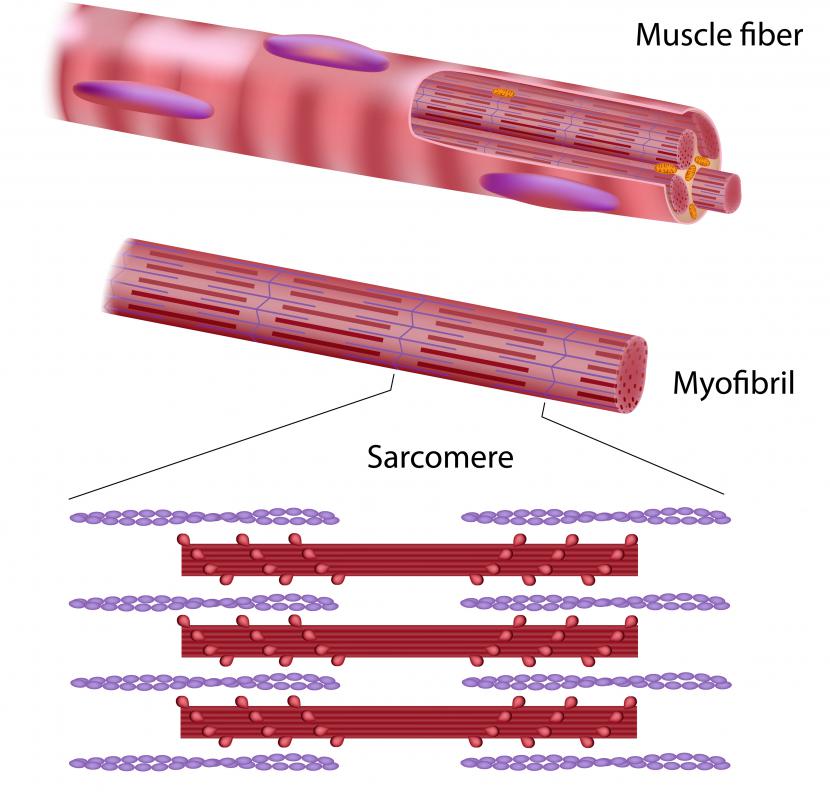At WiseGEEK, we're committed to delivering accurate, trustworthy information. Our expert-authored content is rigorously fact-checked and sourced from credible authorities. Discover how we uphold the highest standards in providing you with reliable knowledge.
What Are Type I Muscle Fibers?
Alternately known as slow-twitch muscle fibers, type I muscle fibers are found in skeletal muscle, the muscle type that produces movement by attaching to bones. These fibers are called upon during low-intensity and long-duration muscle movements, as opposed to type II muscle fibers, which produce high-intensity and short-duration movements. All muscle tissue is made up of a varying ratio of these fiber types, with that ratio genetically determined. As such, some individuals are better suited to more explosive movement types like sprinting while others, those who have been shown to possess more type I muscle fibers, perform better at endurance activities like distance running.
The functional units of skeletal muscle, muscle fibers, or myofibers, are elongated muscle cells that possess multiple nuclei and give the muscle its striated appearance. Within these cells are bands known as sarcomeres that contain alternating filaments, or rows, of proteins known as actin and myosin. It is the binding action of these proteins pulling against one another that causes the sarcomere as a unit to shorten. When all the sarcomeres in all the muscle fibers in a muscle shorten simultaneously, a muscle contraction occurs, causing the muscle the pull on its attaching bones and thereby initiate movement about a joint.

Type I muscle fibers are differentiated from type II muscle fibers, of which there are multiple types, in several ways. First, type I muscle fibers are red in appearance because they contain an additional protein called myoglobin to which oxygen attaches. The presence of oxygen in type I fibers makes them better suited to aerobic activity, which requires oxygen to produce energy. They also are denser with capillaries, accounting for their red color as well as their increased levels of oxygen, and with mitochondria, the energy-producing units of muscle cells.

Type II fibers are white in color because no myoglobin is present in these cells, making them anaerobic. These depend on what are known as glycolytic enzymes to supply energy to the cells. It's these chemical substances that break down glucose, the simplest of the carbohydrates the body uses for energy.
Another way in which type I muscle fibers are distinguished from type II fibers is by their rate of contraction and their level of resistance to fatigue. There is an inversely proportional relationship between these two factors: the type I fibers are slow to contract and highly resistant to fatigue, whereas the type II fibers are quicker to contract and less resistant to fatigue. Type IIa fibers, for instance, possess a relatively high resistance to fatigue and produce only moderately fast muscle contractions. Type IIb fibers, on the other hand, which contract the fastest of all the fiber types, have a low resistance to fatigue. The world’s elite sprinters likely have a high percentage of type IIb fibers in their muscle, causing their muscles to produce explosive contractions but tiring very quickly, while the best distance runners tend to possess a high percentage of type I muscle fibers, making them able to run at a slower pace for longer periods of time.
AS FEATURED ON:
AS FEATURED ON:














Discuss this Article
Post your comments